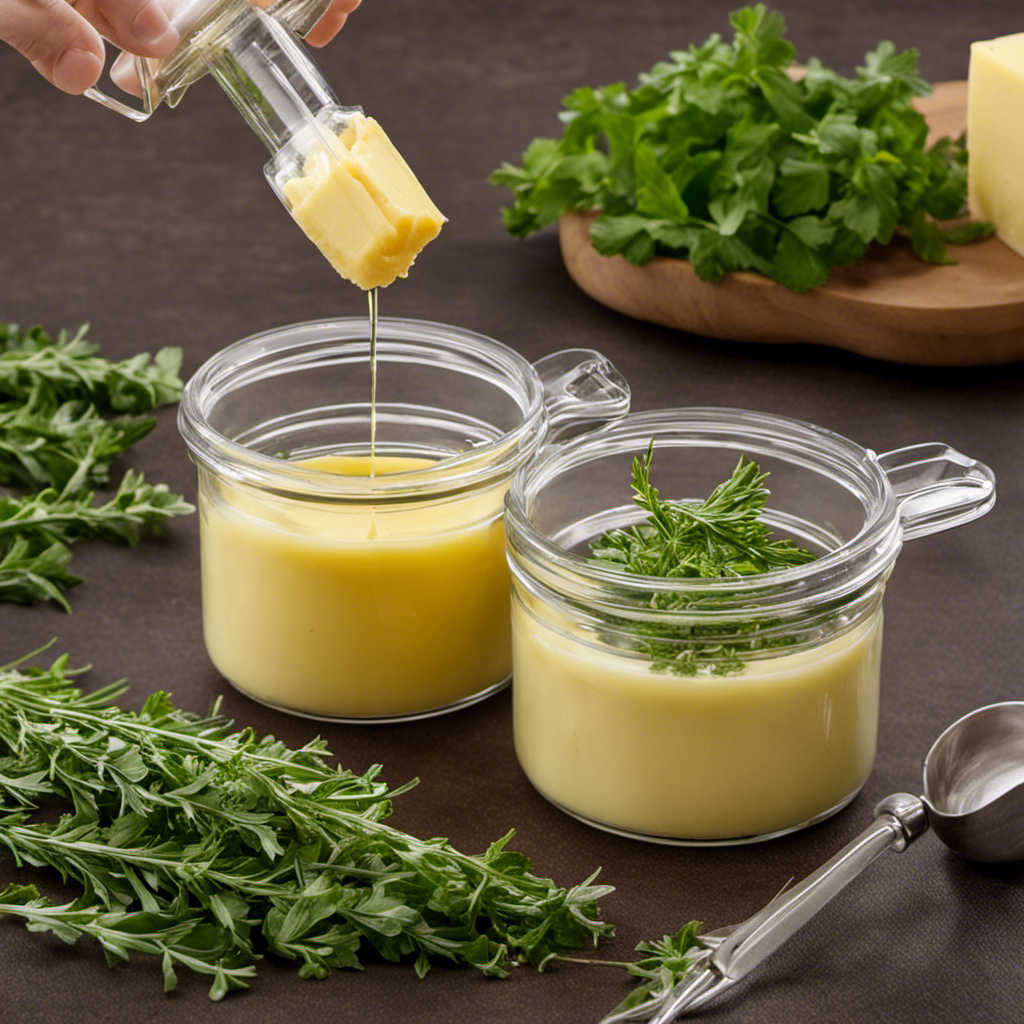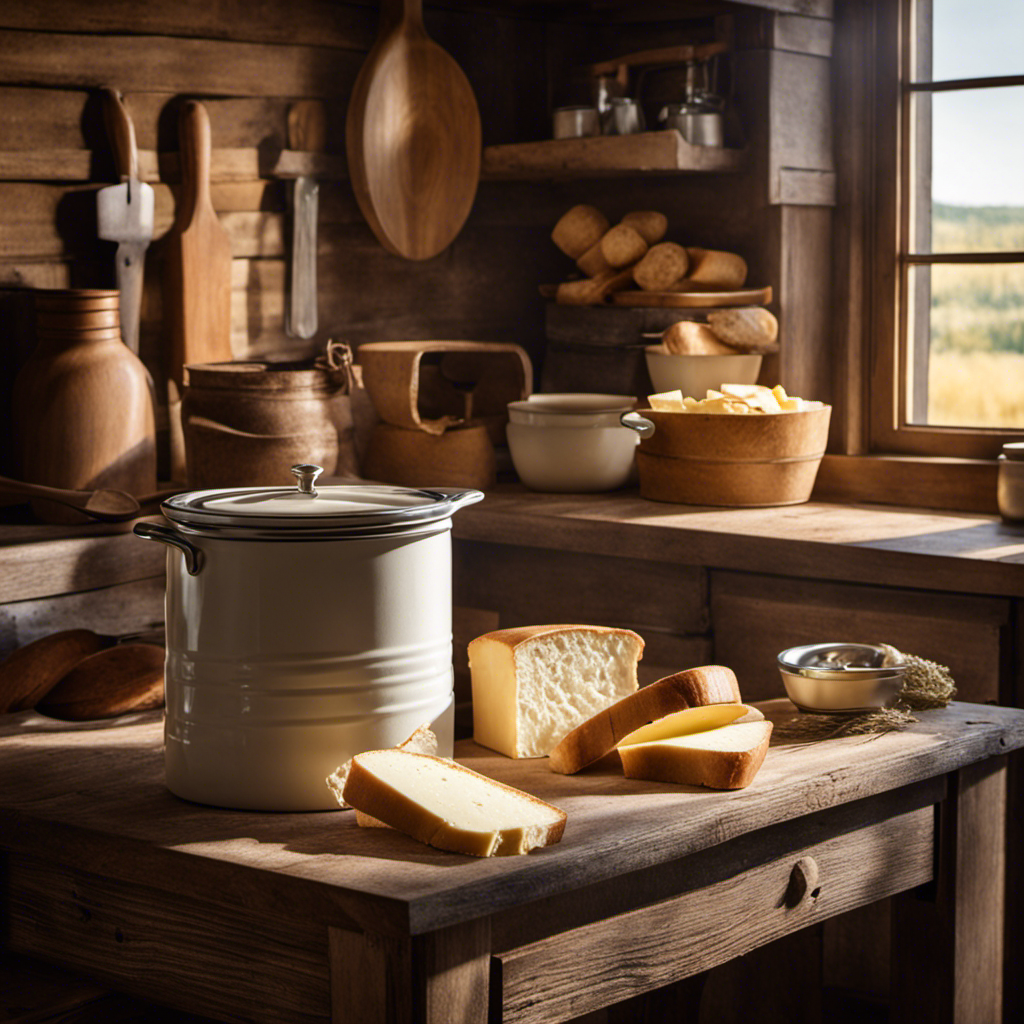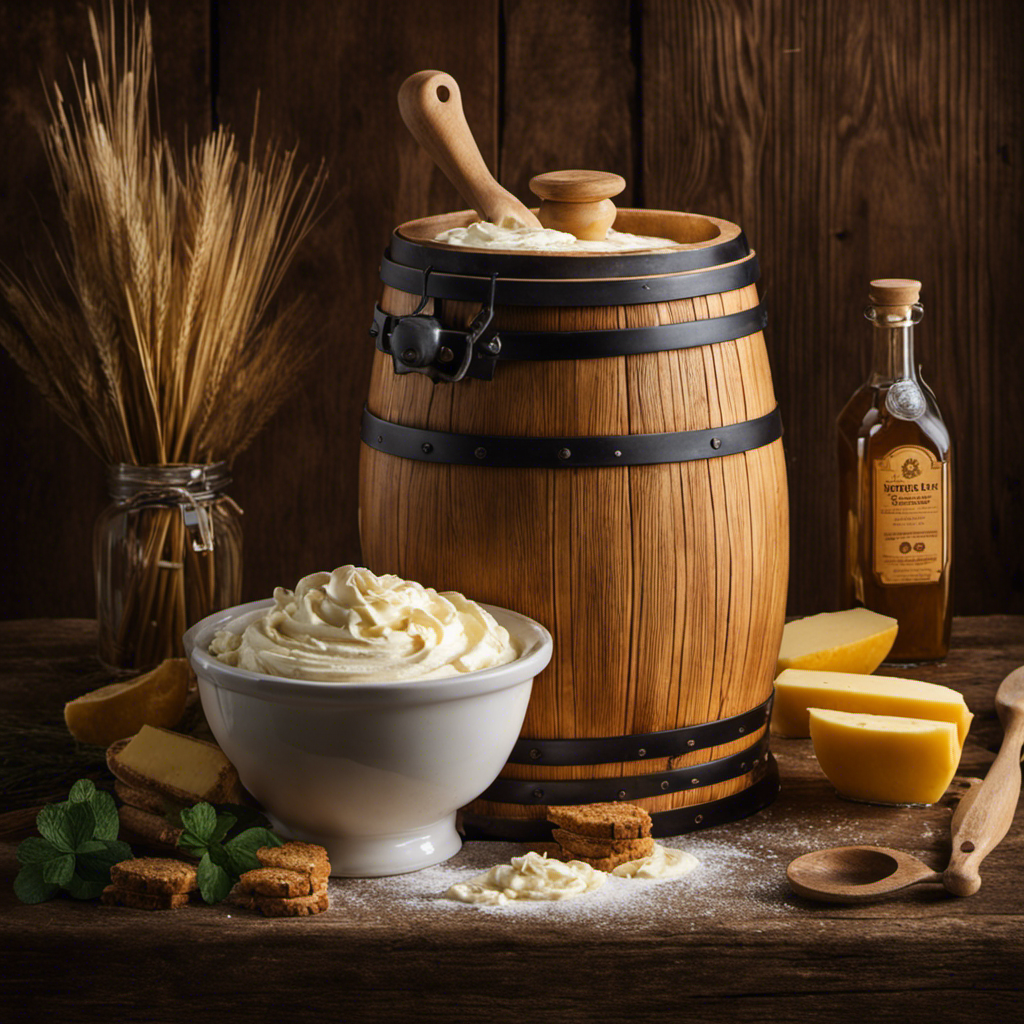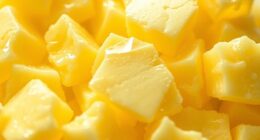I will demonstrate how to create butter slime without using shaving cream. This is a creative variation on the traditional slime recipe. Through trial and error, I have honed the ingredients and methods to achieve the perfect texture.
In this article, I’ll walk you through the step-by-step instructions and provide alternative options for shaving cream. Whether you’re a slime enthusiast or just looking for a creative activity, this tutorial will help you achieve the perfect butter slime consistency.
Let’s dive in and get slimey!
Key Takeaways
- Alternative ingredients for butter slime without shaving cream include lotion, cornstarch or tapioca flour, glue, food coloring, saline solution, foaming hand soap, body wash, and shampoo.
- Different combinations of soap and oil can be used as alternatives to shaving cream, such as aloe vera gel or coconut oil.
- Customization options for butter slime include experimenting with foaming hand soap, body wash, or shampoo for unique textures and scents.
- To achieve the desired consistency, gradually add small amounts of cornstarch to reduce stickiness and thicken the slime, avoiding adding too much to prevent stiffness or dryness.
Ingredients for Butter Slime Without Shaving Cream
To make butter slime without shaving cream, you’ll need a few key ingredients. When it comes to alternative ingredients for this homemade recipe, there are a few options to consider.
One option is to use lotion instead of shaving cream. The lotion adds a creamy texture to the slime and helps it hold its shape.
Another alternative is to use cornstarch or tapioca flour, which can help thicken the slime and give it a buttery consistency.
Additionally, you’ll need glue, food coloring, and saline solution to activate the slime. These ingredients work together to create a stretchy and smooth butter slime.
Now that we have covered the ingredients, let’s move on to the step-by-step instructions for making butter slime.
Step-by-Step Instructions for Making Butter Slime
When it comes to shaving cream alternatives, there are several ingredient options that can be used to achieve a similar effect.
One popular alternative is using a combination of soap and oil, which can provide a smooth and moisturizing lather.
Additionally, for those looking for a more natural option, ingredients like aloe vera gel or coconut oil can be used to create a homemade shaving cream with a desired consistency.
Ingredient Alternatives for Shaving Cream
You can use alternative ingredients instead of shaving cream to make butter slime, like foaming hand soap or body wash. These alternative ingredients have their own benefits and can provide a unique texture and scent to your slime.
Here are some benefits of using alternative ingredients:
-
Foaming hand soap:
-
Creates a light and fluffy texture in the slime.
-
Adds a pleasant scent to the slime.
-
Easily accessible and can be found in different varieties.
-
Body wash:
-
Provides a creamy and smooth consistency to the slime.
-
Offers a wide range of scents to choose from.
-
Adds moisturizing properties to the slime.
-
Shampoo:
-
Gives the slime a thick and glossy appearance.
-
Infuses the slime with a pleasant fragrance.
-
Can be used to create different colors by using different shampoo variants.
Using these alternative ingredients allows for experimentation and customization, giving you the freedom to create your perfect butter slime.
Tips for Achieving Desired Consistency
If your slime is too sticky, add a small amount of cornstarch to achieve the desired consistency. Cornstarch is an excellent alternative ingredient for thickening slime and reducing stickiness. It works by absorbing excess moisture and binding the ingredients together.
When troubleshooting problems with sticky slime, start by adding a small pinch of cornstarch and kneading it into the mixture. Gradually add more cornstarch if needed, until the slime becomes less sticky and more stretchy. It’s important to add cornstarch in small increments to avoid making the slime too stiff or dry.
Remember to knead the slime thoroughly after each addition to evenly distribute the cornstarch. With the right amount of cornstarch, you can achieve the perfect consistency for your butter slime.
Alternative Ingredients for Shaving Cream in Butter Slime
When it comes to making slime, finding the best ingredients is crucial for achieving the desired texture and consistency. One key ingredient often used in slime recipes is shaving cream. However, there are many alternatives to shaving cream that can be used to create a similar effect in slime.
In this discussion, we will explore the various shaving cream substitutes and determine the best ingredients for making the perfect slime.
Shaving Cream Substitutes
One popular substitute for shaving cream in making butter slime is conditioner. Conditioner is a common hair care product that contains emollients and moisturizing agents, which can help create a similar texture to shaving cream when mixed with other ingredients in butter slime recipes. However, it is important to note that not all conditioners are suitable for making slime, as some may contain ingredients that can affect the slime’s consistency or smell.
When looking for a conditioner alternative, consider the following options:
- Baby lotion: This gentle and moisturizing product can provide a creamy texture to your slime.
- Body lotion: Similar to baby lotion, body lotion can add a smooth and soft feel to your butter slime.
- Coconut oil: This natural ingredient can be melted and mixed with other ingredients to create a creamy base for your slime.
Best Ingredients for Slime?
To achieve the best texture and consistency in your slime, you should consider using ingredients such as glue, borax, and water. These ingredients are essential in creating a slime that is smooth, stretchy, and easy to manipulate.
However, if you are looking for alternative ingredients or different textures, there are a few options to consider. One alternative to glue is clear liquid school glue, which can give your slime a translucent appearance.
For a different texture, you can try adding cornstarch or lotion to your slime mixture. Cornstarch creates a thicker and more moldable slime, while lotion adds a soft and fluffy texture.
Tips for Achieving the Perfect Consistency in Butter Slime
For the perfect consistency in butter slime, it’s important to knead the slime mixture thoroughly. This ensures that all the ingredients are evenly distributed, resulting in a smooth and stretchy texture.
To enhance the tactile experience, you can experiment with alternative textures for butter slime. Consider adding small foam beads for a crunchy feel or mixing in fine glitter for a sparkly effect.
Another creative way to elevate your butter slime is by exploring different ways to color it. You can use food coloring to achieve vibrant hues or try mixing in acrylic paint for a more opaque and vibrant look.
By incorporating these alternative textures and creative coloring techniques, you can take your butter slime to the next level of sensory delight.
Now, let’s dive into fun additions and variations for butter slime without shaving cream.
Fun Additions and Variations for Butter Slime Without Shaving Cream
Adding different types of clay can give your butter slime a unique texture and vibrant colors. By incorporating fun texture additions and creative mix-ins, you can take your butter slime to the next level. Here are some exciting options to experiment with:
| Texture Additions | Creative Mix-Ins |
|---|---|
| Foam beads | Glitter |
| Fishbowl beads | Sequins |
| Floam balls | Confetti |
| Pearl beads | Charms |
Foam beads and fishbowl beads provide a satisfying crunchy texture, while floam balls add a fun pop. Pearl beads create a smooth and sleek feel to the slime. To enhance the visual appeal, try incorporating glitter, sequins, confetti, or charms. These mix-ins will add a touch of sparkle and make your butter slime truly stand out. Remember to experiment and have fun with different combinations to find your perfect mix.
Storing and Preserving Your Homemade Butter Slime
Storing your homemade butter slime properly will help preserve its texture and prevent it from drying out. To extend the shelf life of your butter slime, follow these storing techniques:
-
Use an airtight container: Place your butter slime in a container with a tight-fitting lid to prevent air from drying it out.
-
Keep it in a cool, dry place: Avoid exposing your butter slime to heat or humidity, as these conditions can cause it to become sticky or moldy.
-
Avoid direct sunlight: Sunlight can fade the color of your butter slime and alter its texture.
-
Store away from food: To prevent cross-contamination, store your butter slime away from food products to avoid any potential contamination or ingestion.
Troubleshooting Common Issues With Butter Slime Making
If your butter slime is too sticky, try adding more cornstarch to achieve the desired consistency. Troubleshooting common butter slime problems can be a bit tricky, but with the right techniques, you can fix them easily. Here are some common issues and their solutions:
| Problem | Cause | Solution |
|---|---|---|
| Sticky Slime | Insufficient cornstarch | Add more cornstarch and knead until desired consistency is reached |
| Dry Slime | Too much cornstarch | Add a small amount of lotion or oil and knead until slime becomes softer |
| Not Stretchy | Over-activated slime | Add a small amount of activator and knead until slime becomes stretchy |
Frequently Asked Questions
Can I Use Regular Butter Instead of Shaving Cream in Butter Slime?
I wouldn’t recommend using regular butter instead of shaving cream in butter slime. The purpose of shaving cream is to create a fluffy texture and add volume. Using butter may not achieve the desired consistency for sensory play. There are different types of slime recipes available that can be used for various textures and effects.
What Can I Use as a Substitute for Borax in This Recipe?
As a substitute for borax in slime recipes, there are a few alternatives. Some options include using liquid starch, contact lens solution, or a mixture of baking soda and saline solution. When making butter slime, these alternative ingredients can be used to achieve the desired consistency.
How Long Does Homemade Butter Slime Last Before It Goes Bad?
Butter slime typically has a shelf life of about 1-2 weeks before it starts to go bad. To extend its lifespan, store it in an airtight container in a cool, dry place.
Can I Add Food Coloring to the Slime to Make It a Different Color?
Yes, you can add food coloring to the slime to change its color. However, if you don’t have food coloring, you can use other alternatives like acrylic paint or powdered pigments. It’s important to store the slime in an airtight container to prevent it from drying out.
How Do I Remove Butter Slime From Clothing or Furniture if It Accidentally Gets Stuck?
To prevent butter slime from sticking to clothing or furniture, try adding a small amount of baby oil or lotion to the mixture. If it accidentally gets stuck, scrape off excess slime, then blot with a mixture of dish soap and warm water.
Conclusion
In conclusion, creating butter slime without shaving cream requires careful attention to detail and a precise mixture of alternative ingredients.
By following the step-by-step instructions and experimenting with different variations, you can achieve a delightful consistency that mimics the smoothness of butter.
It’s important to store and preserve your homemade slime properly to ensure its longevity.
If any issues arise during the process, troubleshooting techniques can help you overcome them.
Embrace the art of butter slime making and enjoy the euphoric experience of creating your own unique concoction.










